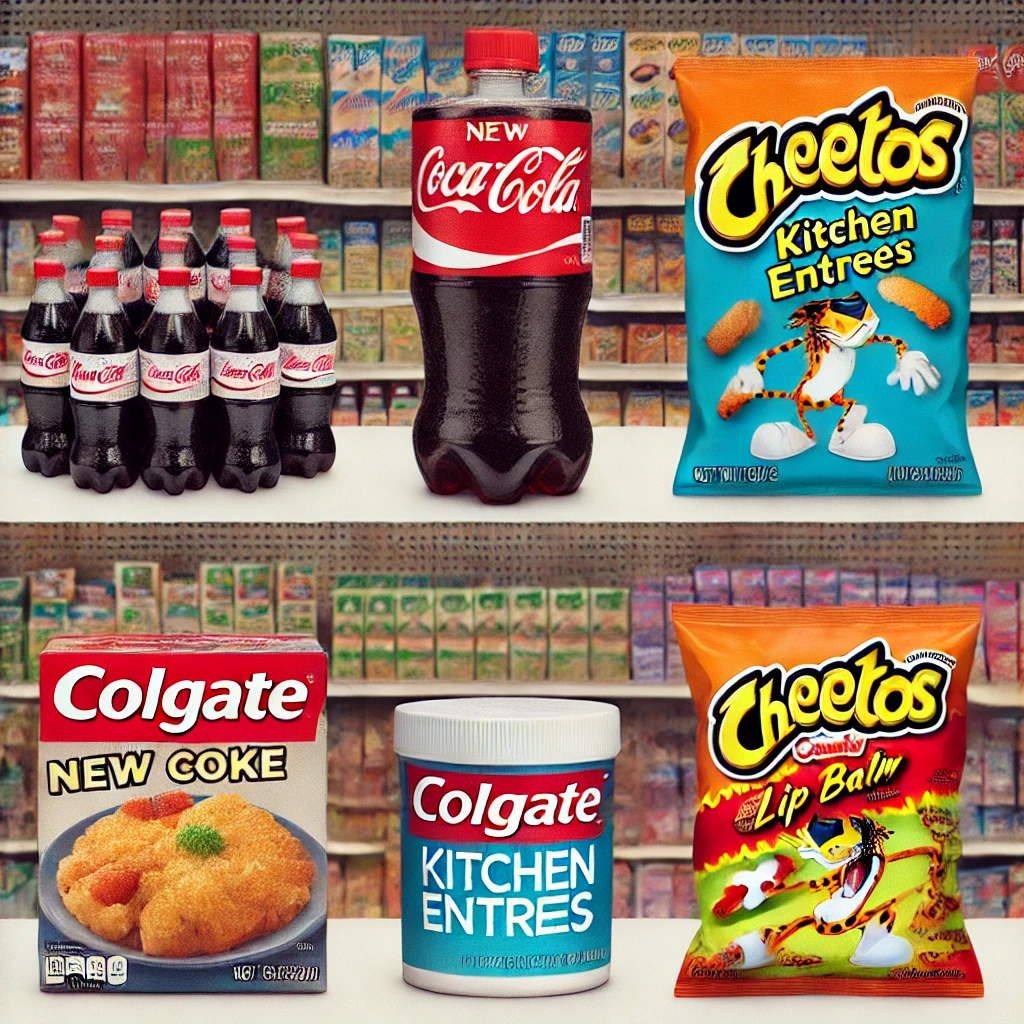
Food products come and go in the market, with some becoming household names while others fade into obscurity. Despite extensive research and marketing efforts, not every food product succeeds. Some become notorious examples of what not to do in the food industry. This article will explore what failed food products are, why they failed, who was behind these products, and what lessons can be learned from these failures.
What Are Failed Food Products?
Failed food products are items introduced to the market with high hopes but end up being discontinued due to poor sales, negative consumer feedback, or other issues. These products often have short lifespans and are remembered for their inability to capture the market’s interest.
Examples of Failed Food Products
- New Coke: In 1985, Coca-Cola introduced a reformulated version of its classic soda, known as New Coke. The company aimed to revitalize its brand and compete with Pepsi. However, the new flavor was met with widespread backlash from loyal customers, leading Coca-Cola to revert to the original formula within a few months.
- Colgate Kitchen Entrees: Colgate, known for its dental care products, ventured into the frozen food market in the 1980s. The idea of a toothpaste brand selling frozen meals was too strange for consumers, resulting in poor sales and a quick exit from the market.
- Cheetos Lip Balm: Cheetos, a popular snack brand, decided to expand its product line by introducing Cheetos-flavored lip balm. The unusual flavor combination did not appeal to consumers, and the product was quickly discontinued.
Why Do Food Products Fail?
Several factors contribute to the failure of food products. Understanding these reasons can help businesses avoid similar pitfalls in the future.
Lack of Market Research
Many failed food products did not undergo thorough market research. Companies assumed that their existing brand popularity would guarantee success in new ventures, which often proved to be a costly mistake.
Poor Product Fit
Introducing products that do not align with a brand’s core identity can confuse consumers. For instance, Colgate’s association with dental hygiene made it difficult for customers to accept it as a food brand. Also read Best Business Insurance Providers: What to Look For and Why They Matter
Unappealing Taste or Packaging
Food products must appeal to the senses. If a product’s taste, texture, or packaging is off-putting, consumers are unlikely to purchase it again. New Coke’s altered taste did not resonate with Coca-Cola’s loyal customer base, leading to its swift demise.
Overestimated Demand
Companies sometimes overestimate the demand for a new product. This can result in excess inventory and financial losses. Frito-Lay’s WOW Chips, introduced with Olestra, a fat substitute, failed because the demand was overestimated, and the product caused unpleasant digestive issues for many consumers.
Who Was Behind These Failed Products?
Understanding who was behind these failed food products can provide insights into the decision-making processes that led to their creation.
Large Corporations
Many failed food products come from large, well-established corporations. These companies have the resources to develop and launch new products but can sometimes miss the mark due to internal biases or overconfidence. Coca-Cola, Colgate, and Frito-Lay are prime examples of major companies that experienced significant product failures.
Innovative Entrepreneurs
Smaller companies and entrepreneurs also contribute to the list of failed food products. Their innovative ideas can sometimes be too ahead of their time or fail to resonate with the intended audience. Despite their best efforts, these products can struggle to find a market foothold.
What Lessons Can Be Learned?
Analyzing failed food products offers valuable lessons for future endeavors in the food industry.
Conduct Thorough Market Research
Understanding consumer preferences and market trends is crucial. Comprehensive market research can help identify potential issues before a product is launched, saving time and resources.
Align Products with Brand Identity
New products should align with the brand’s existing identity. Consumers have established perceptions of brands, and deviating too far from these can lead to confusion and rejection.
Focus on Quality and Appeal
Ensuring that a product has an appealing taste, texture, and packaging is vital. Consumer testing and feedback can help refine the product before it hits the market.
Manage Expectations
Realistic sales projections and demand estimates can prevent overproduction and financial loss. Companies should be prepared for various outcomes and have contingency plans in place.
Does This Mean Companies Should Avoid Innovation?
Absolutely not. Innovation is essential for growth and staying competitive in the market. However, it must be approached with careful planning and consideration of consumer needs and preferences.
The Role of Innovation
Innovation drives progress and can lead to the development of successful, groundbreaking products. Companies should encourage creative thinking while also grounding their ideas in solid market research and consumer insights.
Conclusion
Failed food products serve as reminders that even the most well-known companies can make mistakes. By understanding what went wrong with these products, businesses can learn valuable lessons to improve their chances of success in the competitive food industry. Thorough market research, brand alignment, focus on quality, and realistic expectations are key factors that can help avoid the pitfalls experienced by these failed food products.

Leave a Reply